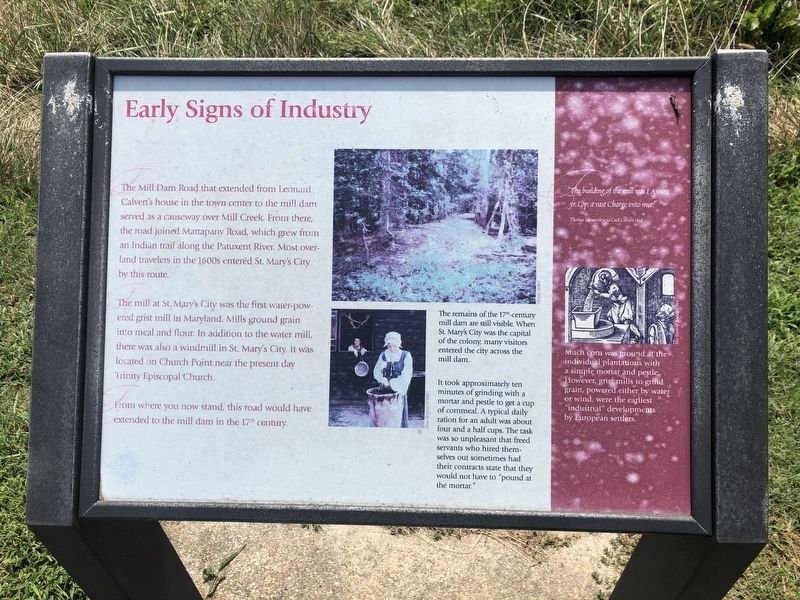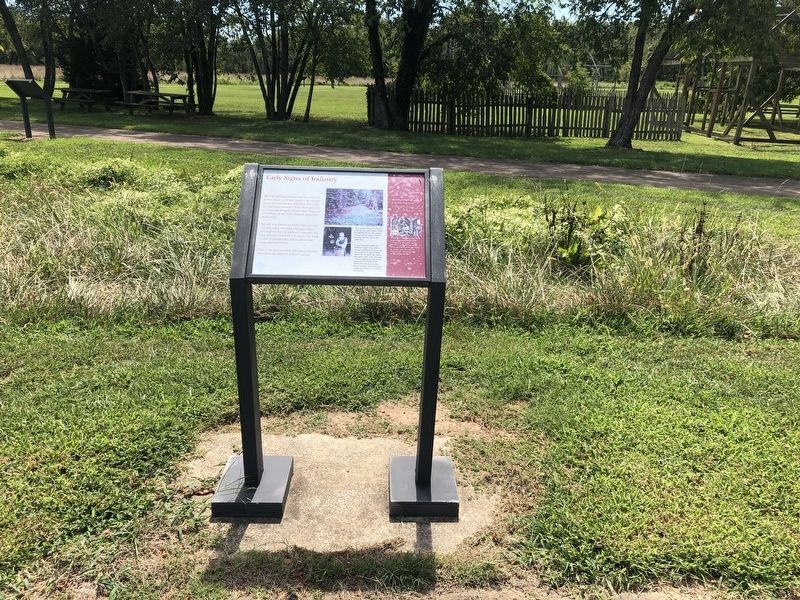St. Mary's City in St. Mary's County, Maryland — The American Northeast (Mid-Atlantic)
Early Signs of Industry
The mill at St. Mary's City was the first water-powered grist mill in Maryland. Mills ground grain into meal and flour. In addition to the water mill, there was also a windmill in St. Mary's City. It was located on Church Point near the present day Trinity Episcopal Church.
From where you now stand, this road would have extended to the mill dam in the 17th century.
[Captions:]
The remains of the 17th-century mill dam are still visible. When St. Mary's City was the capital of the colony, many visitors entered the city across the mill dam.
It took approximately ten minutes of grinding with a mortar and pestle to get a cup of cornmeal. A typical daily ration for an adult was about four and a half cups. The task was so unpleasant that freed servants who hired themselves out sometimes had their contracts state that they would not have to "pound at the mortar."
[Aside:]
"The building of the mill was I Assure yr. Lop: a vast Charge vnto mee."
Thomas Cornwaleys to Cecil Calvert, 1638
Much corn was ground at the individual plantations with a simple mortar and pestle. However, grist mills to grind grain, powered either by water or wind, were the earliest "industrial" developments by European settlers.
Erected by Historic St. Mary's City.
Topics. This historical marker is listed in these topic lists: Colonial Era • Industry & Commerce • Settlements & Settlers. A significant historical year for this entry is 1638.
Location. 38° 11.054′ N, 76° 25.933′ W. Marker has been reported damaged. Marker is in St. Mary's City, Maryland, in St. Mary's County. Marker is on Middle Street Path just east of Aldermanbury Street Footpath, on the left when traveling east. Touch for map. Marker is in this post office area: Saint Marys City MD 20686, United States of America. Touch for directions.
Other nearby markers. At least 8 other markers are within walking distance of this location. Horse High, Pig Tight, and Bull Strong (a few steps from this marker); "…once the Metropolis" (within shouting distance of this marker); A Time of Troubles (within shouting distance of this marker); Framing the Past (within shouting distance of this marker); Witness to History (within shouting distance of this marker); From Slavery to Freedom (about 400 feet away, measured
Credits. This page was last revised on September 1, 2019. It was originally submitted on September 1, 2019, by Devry Becker Jones of Washington, District of Columbia. This page has been viewed 115 times since then and 10 times this year. Photos: 1, 2. submitted on September 1, 2019, by Devry Becker Jones of Washington, District of Columbia.

